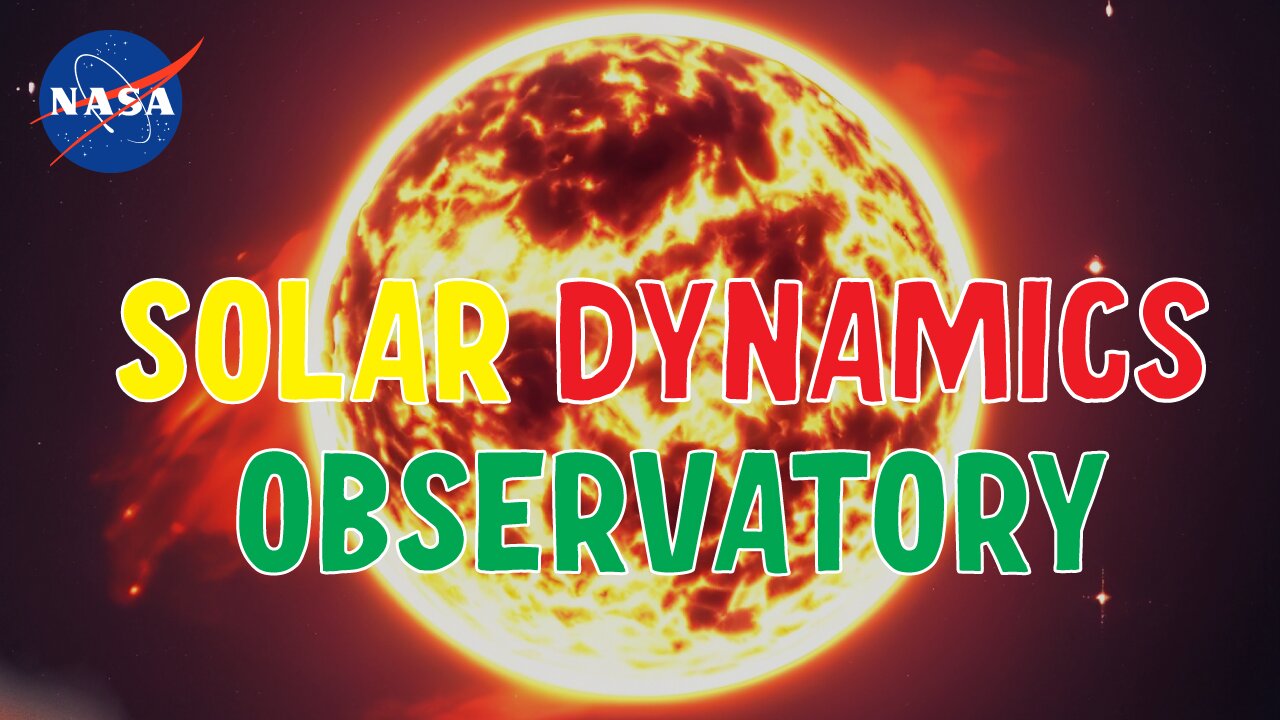Premium Only Content

Six Years of SDO in Stunning Ultra-HD
The sun is in a constant state of change, and NASA's Solar Dynamics Observatory (SDO) is perpetually vigilant. Launched on February 11, 2010, the SDO maintains an uninterrupted watch over the entire solar disk, providing an exceptional perspective on the elegant choreography of solar materials coursing through the sun's outer atmosphere, the corona. The SDO's sixth year in orbit was no exception, and this video presents the entirety of its sixth year, spanning from January 1, 2015, to January 28, 2016, condensed into a captivating time-lapse sequence.
When viewed at its highest quality on YouTube, this video offers an ultra-high-definition experience at 3840x2160 resolution, with a frame rate of 29.97 frames per second. Each frame in this sequence corresponds to a two-hour interval. Alternatively, a downloadable version is available with a faster frame rate of 59.94 frames per second, where each frame represents a one-hour span. The SDO's Atmospheric Imaging Assembly (AIA) captures an image of the sun every 12 seconds in ten different wavelengths. The visuals showcased here are based on the 171 angstroms wavelength, situated in the extreme ultraviolet range, revealing solar material at approximately 600,000 kelvins (equivalent to about 1,079,540 degrees Fahrenheit). In this wavelength, the sun's 25-day rotation becomes prominently visible.
Throughout the video, the sun subtly expands and contracts in apparent size due to the varying distance between the SDO spacecraft and the sun itself. Nevertheless, the imagery remains strikingly consistent and stable, despite the SDO orbiting Earth at a staggering 6,876 miles per hour, while Earth completes its own orbit around the sun at a remarkable 67,062 miles per hour.
Scientists scrutinize these images to gain a deeper understanding of the intricate electromagnetic processes responsible for the sun's perpetual activity, which can occasionally have repercussions closer to Earth. Solar phenomena like flares and coronal mass ejections can disrupt technology in space. Furthermore, studying our nearest star provides valuable insights into the behavior of other stars in our galaxy. NASA's Goddard Space Flight Center in Greenbelt, Maryland, played a pivotal role in constructing, operating, and managing the SDO spacecraft for NASA's Science Mission Directorate in Washington, D.C.
Credit: NASA's Goddard Space Flight Center/Wiessinger
Music: "Tides," a track available from Killer Tracks
#NASADataViz #4KVisualizations #StunningNASA #UltraHD #SpaceExploration #Earth #Sun #Moon #Astronomy #ScientificVisualizations #NASAInsights
-
 1:27:43
1:27:43
DeProgramShow
3 months agoEXCLUSIVE on DeProgram: “A Live Interview with Jake Tapper”
11.1K3 -
 1:25:15
1:25:15
The HotSeat
15 hours agoHere's to an Eventful Weekend.....Frog Costumes and Retards.
20K8 -
 LIVE
LIVE
Lofi Girl
2 years agoSynthwave Radio 🌌 - beats to chill/game to
184 watching -
 1:34:23
1:34:23
FreshandFit
13 hours agoThe Simp Economy is Here To Stay
154K13 -
 19:35
19:35
Real Estate
14 days ago $2.41 earnedMargin Debt HITS DANGEROUS NEW LEVEL: Your House WILL BE TAKEN
15.7K4 -
 4:03:48
4:03:48
Alex Zedra
9 hours agoLIVE! Battlefield 6
54.2K2 -
 2:03:15
2:03:15
Inverted World Live
11 hours agoProbe News: 3I Atlas is Spewing Water | Ep. 125
126K27 -
 3:02:07
3:02:07
TimcastIRL
11 hours agoTrump Admin CATCHES Illegal Immigrant POLICE OFFICER, Democrats ARM Illegal In Chicago | Timcast IRL
256K158 -
 4:39:39
4:39:39
SpartakusLIVE
10 hours agoNEW Mode - ZOMBIES || LAST Stream from CREATOR HOUSE
63K7 -
 3:36:25
3:36:25
The Charlie Kirk Show
12 hours agoTHOUGHTCRIME Ep. 101 The New York City Communist Debate? MAGA vs Mamdani? Medal of Freedom Reactions
166K71